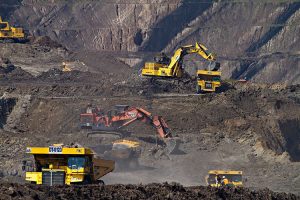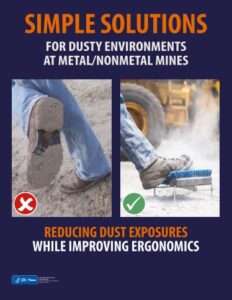Recently, the National Institute for Occupational Safety and Health (NIOSH) published a booklet to help miners reduce their exposure to respirable dust in metal and nonmetal mines.
These controls not only reduce dangerous respiratory problems, they also lower the risk of musculoskeletal disorders and traumatic injuries.
Although mine safety has come a long way over the last several decades, workers still face dangerous conditions.
For example, more than 23% of all silicosis deaths are directly related to mining. Additionally, underground mining is directly linked to a significantly higher risk of dying from lung cancer.
But, with a few simple steps, improving the health and safety of your team is possible.
Limiting Dust Exposure Starts at the Source
Exposure to hazardous dust can happen from several common triggers, often coming from multiple sources at once:
- Inadequate housekeeping (e.g., buildup of material on interior structures, conveyors or transfer points)
- Lack of effective local exhaust or structure ventilation
- Lack of effective enclosure filtration
- Poor work practices (e.g., handling dusty equipment and materials, or clapping hands to “clean off” gloves)
However, with the right controls in place, you’ll discover benefits beyond healthier lungs.
The same controls for reducing respirable dust also reduce the incidents of musculoskeletal disorders (MSDs) and traumatic injuries such as slips, trips, and falls.
Limiting dust exposure isn’t just about breathing easier – it’s a part of overall better well-being.
Best Practices
To limit dust exposure while boosting ergonomics, consider the following solutions:
- When possible, use angled stairways or alternating tread stairs instead of vertical ladders. This helps reduce the release of dust into workers’ breathing zones. In addition, stairways are less likely to lead to accidents such as slips and falls.
- Hose down walking surfaces and handrails to reduce dust accumulation, and practice caution until surfaces have dried.
- When bagging and stacking materials, consider using semi or fully-automated bagging solutions. Not only do they cut down on dust exposure, they’re more ergonomic for workers, reducing risk of MSD’s.
- Store new screens where they will be protected from collecting surface dust deposits.
- Consider using separate work stands outfitted with a local exhaust ventilation system for screen deck maintenance.
- Provide a separate, positively pressurized control room for workers, which keeps dust out with the use of air pressure.
- Spray off coiled or rolled hoses before use to reduce residual dust.
- Ensure an adequate drainage system is in place if water is used to hose down areas with accumulated dust.
- Provide designated walkways and boot brushes at mobile equipment parking areas to help workers remove contaminants from footwear.
- When tying bag collars, face the openings away from workers’ breathing zones as much as possible.
Though miners are at a higher risk for both MSDs and respirable diseases, these steps help limit the impact of both.
The five fundamental risk factors for MSDs are often present in mine work: forceful work, poor posture, repetitive work, vibration exposure, and slip, trip, and fall hazards.
“While traumatic injuries occur suddenly, both MSDs and respirable diseases tend to be the result of cumulative overexposures,” NIOSH says.
“Exposures both at home and at the workplace can combine and manifest themselves in the later years of your career, depending on your exposure rates and cumulative stress.”
To prevent problems down the road, it’s important to take preventative steps now.
Download the full booklet here:
***
About Worksite Medical
In most cases, OSHA requires medical surveillance testing, and at no cost to employees.
Worksite Medical makes that program easier with mobile medical testing.
We conduct on-site respirator fit tests, as well as audiometric exams, silica exams, pulmonary function tests and heavy metal lab work, right on your job site. We also keep accurate, easy-to-access medical records for your convenience. You’ll keep your employees at work, and stay ahead of OSHA inspections.
With Worksite Medical, a mobile medical testing unit — we can bring all the resources of a lab to you. Our certified lab technicians can perform both qualitative and quantitative respirator tests to ensure a perfect fit.
Protect your team and your workplace now with Worksite Medical. Not sure what you need? Try our medical testing wizard here.
Give us a call at 1-844-622-8633, or complete the form below to schedule an on-site visit or to get your free quote!





